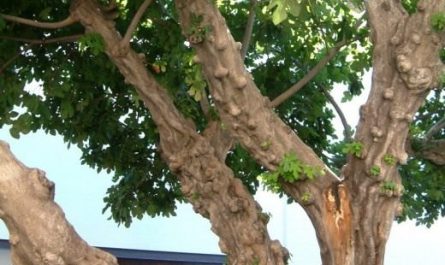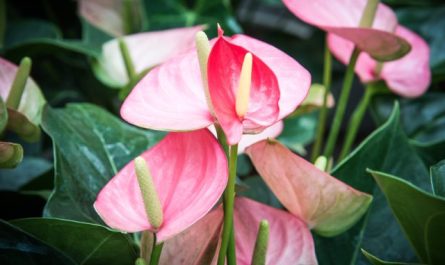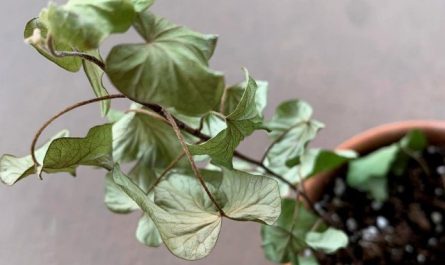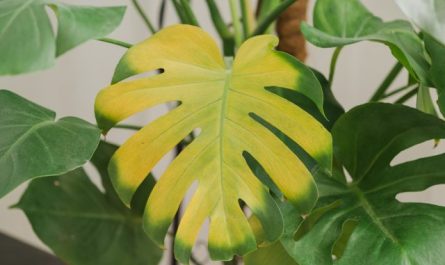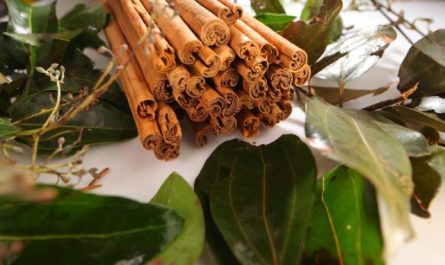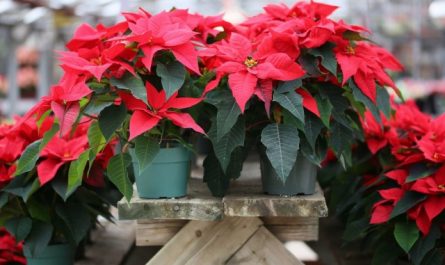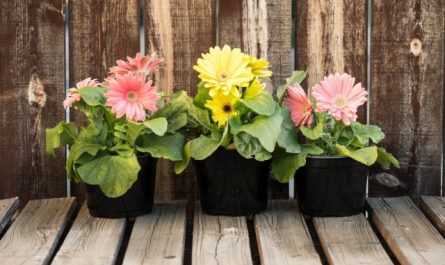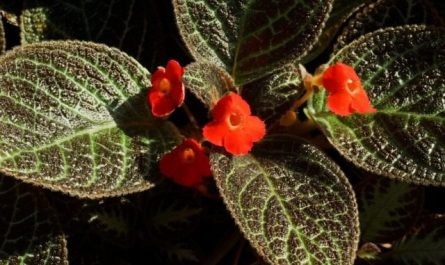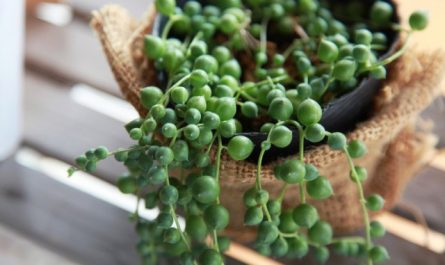Among indoor shrubs, there are not many plants that are famous for their flowering more than for the beauty of their shoots. Lantana camara is one of them. Amazingly easily changing its growth form, lantana surprises not so much with its unpretentiousness, but with the beauty of its unusual inflorescences. Soft color transitions give the dense shields a rainbow effect. And it is difficult to take your eyes off the flowering, feminine, bright and so multi-colored lantana. But to admire its flowering, you will have to control the wintering conditions and the frequency of watering. But it grows so quickly that it recovers in a matter of weeks.

Lantana camara – a plant with “obedient” branches
Lantana camara is a name that is not known to all flower growers. One of the most amazing herbaceous shrubs has earned many original nicknames – stinging nettle, maiden word, prickly nettle, rainbow bush. The dismissive “nettle” is not quite right for this luxurious plant. If Lantana camara can surprise with something, it is its spectacularity.
Lantanas presumably received their botanical name in honor of the ancient Roman “viburnum”; their inflorescences are indeed slightly reminiscent in shape of the viburnum inflorescences, although lantanas have much more in common with other representatives of the Verbenaceae family.
Lantana camara (Lantana camara) is the most famous and widespread species of the genus. Today, the species name is often not mentioned in sales, but if the plant is sold under the general name “lantana”, it is specifically about lantana camara.
Depending on the growing and shaping strategy, lantanas can be in the form of compact bushes, spreading cushions, neat or not very small trees, but they still remain fast-growing plants with erect, densely branching shoots and woody, strong, densely branching roots.
Lantana grows quickly, being one of the most active non-cold-resistant crops. The tetrahedral shoots woody slowly and branch surprisingly densely. At the same time, the more actively they are pruned, the better the young shoots grow. The plant develops rapidly, even after strong pruning at the end of February, already in April the bushy plant is able to release the first buds.
The shoots of Lantana camara are often spiny, not densely foliated with oppositely arranged leaves, but, due to branching, long internodes are not noticeable.
Lantana leaves are somewhat reminiscent of nettles, but look more solid. The wrinkled surface, prominent relief veins, oval leaf shape with an elongated tip are combined with a coarsely or finely serrated, and sometimes serrated edge. On shoots, leaves are located on fairly long petioles. The matte surface of the leaves seems velvety, including due to the unusual pubescence along the veins, which intensifies on the underside of the leaf blades.
When touched or rubbed, the leaves of camara emit a rather pungent aroma, which combines spicy, refreshing and unpleasant notes.

Lantana camara in bloom
Lantana camara blooms tirelessly throughout the summer. The inflorescences seem to open one after another, creating the effect of a continuous parade. The first buds on the plant appear by the end of April. Lantana blooming, somewhat weakening, usually lasts throughout September.
The spherical shape of the inflorescences of Lantana camara is, on closer inspection, a simple form of hemispherical dense corymbs, but from a distance they look like perfect balls. Before the flowers begin to bloom, the inflorescences appear as flat disks, quickly transforming when luxurious tubular flowers with a simple flat broom rise on long peduncles. The maximum diameter of the inflorescences of Lantana camara is about 5 cm.
The ability to change colors distinguishes this plant from all other competitors. Of course, the “mechanism” of coloring on the inflorescences of Lantana camara is quite simple: the flowers change color to an increasingly darker and more saturated color as they age. Three different colors change on one inflorescence. The effect is simply amazing.
Close in spectrum, but often different in character, light and bright tones flow as if in watercolor into increasingly brighter ones in already blossomed flowers. And the plant seems rainbow – bright, original, multi-colored.
Flowers bloom first at the edges of the inflorescence, so the shades of color on the outside are always more intense. Only at the end of flowering, a few days after the last central flowers bloom, does lantana finally acquire a uniform color. But it is worth taking a closer look at the flowers: inside each flower, barely noticeable spots of other shades still remind us of a watercolor-rainbow miracle.
The color of the lantana inflorescences in the classic version is yellow-orange-red. But the breeding of varieties with brighter tones and almost monochromatic variations has changed the boring basic forms beyond recognition. And today, decorative forms of the plant, bred back in the 19th century, remain very popular – mutabilis with a change from white to yellow, pink and purple color, sanguine with the inflorescences changing color from yellow to red.
As well as classic varieties Mixed with a “double” inflorescence of external yellow-cherry and internal yellow-orange flowers, white-blue variety Nivea and yellow-orange Croquet.
More modern varieties boast very large inflorescences. Magnificent orange-terracotta-brick variety “Cocktail”, yellow and white variety “Golden Cloud”, yellow-orange-pink variety “The Pink Queen” — typical multi-colored hybrids. Among the single-flowered varieties, the dazzling lemon color of the variety is especially popular. Lucky Lemon Cream.
Not all lantanas bear fruit abundantly, but the base plants and ornamental forms, as well as some older varieties, produce seeds in large quantities. The berry-like fruits are very poisonous before they ripen.

Other types of indoor lantanas
The genus Lantana includes more than a hundred species of plants, which are both shrubs and herbaceous perennials. In nature, you can enjoy the beauty of the growing, stunningly beautiful lantanas in the tropical regions of the American continents and Africa, Australia and Oceania.
Sometimes lantanas are comparable to weeds in their aggressiveness and cause a lot of difficulties. Brazilian tropical forests are considered ideal for them, and similar conditions are tried to be recreated in both greenhouses and rooms. Lantana has been grown as a greenhouse and indoor plant since the 18th century.
Several dozen varieties of lantana can be grown in pots. Although lantana camara remains the most popular species, two other species of this plant can occasionally be found for sale.
Lantana montevideica (Lantana montevidensis, formerly known as Lantana Zello (lantana sellowiana) is one of the most original species of lantana, the structure of which is difficult to even assess, the crown of an adult plant is so similar to solid dense cushions.
This is an ampelous plant or semi-liana with long, hanging shoots, which is grown in hanging baskets and used to create spectacular large cascades in the interior. This lantana has many interesting varieties, which are usually named according to the tone of the inflorescences – for example, white-purple Purple with unique small two-colored inflorescences.
Lantana hybrid (Hybrid lantana) – a controversial compact variety of lantana, which even without pruning does not grow higher than 1 m, and in varieties it is limited to 30 cm. It develops in the form of very low and dense cushion-shaped bushes and blooms only in yellow.

Growing conditions for indoor lantanas
At first glance, Lantana camara seems to be a capricious, exotic, very bright exotic. But its character does not quite match its bright appearance. This is one of the most undemanding flowering plants, for which it is easy to find a comfortable place in the house.
The main thing is to try to create a difference between the hot summer and cool winter and to ensure sufficiently bright lighting, without which the lantanas will not bloom.
Lighting and placement
Lantanas are light-loving plants. They feel great in sunny places and light windowsills, are not afraid of direct sunlight, but still develop better in diffused light. In winter, it is very important to keep the lighting intense, but only for lantanas that are in a cool place and do not shed their leaves.
Lantanas are placed singly and in groups, near any window except northern ones. For uniform crown development, the plant should be regularly turned.
Temperature conditions and ventilation
Access to fresh air is very important for lantana. Even indoor beauties are best taken out into the open air in the summer, placed on terraces, in gardens or at least on balconies.
Lantanas are put out after the threat of age frosts has disappeared, in June, and brought back before the first cold snap. In the garden, lantanas prefer sunny places. If the plant is left indoors, then airing is done daily or lantanas are placed where the window is constantly slightly open.
Lantanas tolerate both heat and normal room temperatures during the period of active growth. Cool wintering is a prerequisite for the flowering of this crop. Indoor lantanas will prefer wintering at a temperature of about 10 degrees (with a possible decrease to 8 and an increase to 12 degrees Celsius).
Only under such temperature conditions do lantanas retain their leaves and recover quickly. Lantana camara can also withstand warm wintering, but in this case it completely sheds its leaves and requires maintenance in an almost dry substrate, in the dark, and with radical pruning after wintering.

Caring for Lantana camara at home
It is not difficult to care for this unique herbaceous plant, but the care procedures must be regular. Standard watering, fertilizing, and other care points in combination with mandatory hygiene procedures – that’s all the plant will need.
Watering and air humidity
The main task when caring for lantanas is to prevent the substrate from drying out completely. This plant does not tolerate dampness, but if you skip watering and let the soil dry out, the lantana will begin to shed its lower leaves.
Water the plant, allowing the upper part of the substrate to dry out, but trying to maintain stable humidity. The plant is not afraid of abundant watering, but it is better to drain the water from the trays 20-30 minutes after watering.
During wintering, watering of lantana camara is reduced several times, trying to maintain very light soil moisture. If the plants winter in the cool, you need to be very careful with watering, and when shedding leaves in the warmth, they are carried out only to maintain the viability of the roots. The water should be soft and warm.
Outside the flowering period, lantanas can be sprayed, but they tolerate dry air well. But it is necessary to keep the leaves clean, carefully removing dust from them.
Top dressing and fertilizer composition
Despite its rapid growth and fairly rapid depletion of soil, lantana does not tolerate too much fertilizing. Even if you use a standard strategy for garden tubs or beautifully flowering potted plants, there is a risk of creating the effect of excessive fertilizing and stimulating leaf growth to the detriment of flowering.
For lantana, fertilizers are applied regularly, from March until the end of flowering, with the usual frequency of once every 1 weeks, but the concentration of fertilizers is reduced by 2 times compared to the manufacturer’s instructions. It is not advisable to apply fertilizers regularly but rarely, because this way the plant will grow in less stable conditions with fluctuations in soil nutritional indicators.
For lantana, despite its status as a beautifully flowering crop, fertilizers specially designed to stimulate flowering are not suitable. This crop prefers complex balanced fertilizers with an equal content of all three macronutrients. Only during the period of preparation for flowering at the budding stage can potassium-phosphorus fertilizers be applied.

Pruning and shaping lantana camara
Lantana camara blooms only on young, one-year-old shoots that have not yet begun to woody, and pruning and regular trimming only stimulate more abundant flowering.
This is a unique plant that is regularly trimmed in summer, at least 2-3 times, stimulating both tillering and flowering. For lantana, pruning is done at the end of winter or before replanting, repeating regulatory trimming or slightly shortening the shoots up to 4-5 times per season.
Critical importance for all types of lantana is the formation during the first two years – when the plant is given the shape of a tree or bush, which is only maintained from the third year. Lantana shoots can be shortened according to the desired contour or size, leaving at least 1-2 pairs of leaves on the branches. Lantana tolerates both strong pruning and light pinching of the tops equally well.
If lantanas overwinter in warmth or begin to lose their decorative qualities and require rejuvenation, they are pruned radically, leaving only the lower buds on the branches, and where old shoots have stretched out strongly, woody shoots are also cut off. Such lantanas require mandatory replanting.
Lantanas, despite their lush flowering and seemingly difficult to contain growth, are among the best candidates for indoor topiary. The crown of the plant can be carefully and gently trimmed to a certain shape, most often emphasizing the natural density and spherical silhouettes.
Neat and elegant balls on standard plants can become a small miracle in containers. Especially often, those lantanas that are grown as indoor-garden or garden plants with indoor wintering are trimmed according to a strict canon.
Lantana can be grown as a standard plant, and the “stem” is formed surprisingly easily. To turn rainbow nettle into a tree, it is enough to leave the central shoot until it grows to a height of more than 60 cm, and remove only all the side branches, leaving the base of the shoot “bare” up to a height of 30-50 cm. It is not worth forcing the “trunk” of lantana higher than 50 cm, longer legs will not allow the plant to remain stable.
Transplantation, containers and substrate
Lantana camara grows very quickly and just as quickly masters the available soil. The rapid development of both the above-ground part and the rhizome requires regular replanting. Despite the fact that, like any other tub plant, it is better to replant lantana as needed, it is usually replanted annually. Only plants in a neglected state or formed into strict rootstocks do not have time to master the entire substrate in a year.
Usually, due to lack of space for root development and depletion of the soil, camara lantanas stop blooming. If replanting is not carried out, the top layer of soil for the plant is still necessarily replaced with a fresh nutrient substrate.
For lantana, it is essential to select large, spacious, deep containers with good drainage holes.
This crop prefers loose and nutritious soil mixtures, but not excessively fertile soils. Lantana depletes any substrate rather quickly, but excessive fertility worsens flowering and stimulates rapid growth, while choosing a medium or low-nutritious substrate allows you to better restrain the plant and enhance flowering.
For Lantana camara, simple soil mixtures of leaf soil and sand in equal parts or substrates consisting of turf, leaf soil, peat and sand with a predominance of turf soil are suitable. When choosing purchased substrates, soil mixtures with a complex composition are used and an additional portion of loosening components is necessarily added.
Transplantation is usually carried out in the form of transshipment with shortening of roots after reaching the maximum volumes of containers. A high drainage layer is placed on the bottom of the containers.

Diseases, pests and problems in growing Lantana camara
When partially grown outdoors and in a neglected state, Lantana camara may suffer from rust, spotting, and non-specific wilting. Any diseases on the plant are controlled immediately by treating with a systemic fungicide. If the roots rot, Lantana can only be saved by emergency transplantation.
Whitefly, spider mite and aphids are not uncommon pests on this unique beauty. It is also better to start the fight against insects immediately with insecticide treatment.
Any preventive and curative measures on Lantana camara should be combined with moving the plant into quarantine, adjusting the conditions and care, pruning heavily damaged parts and maintaining impeccable cleanliness of the leaves.
Propagation of Lantana camara
This is not the easiest way to propagate plants. The best method for Lantana camara is called cuttings: young, healthy, strong green shoots take root perfectly in a constantly moist substrate or water with frequent replacement and, if properly formed, allow you to quickly get lush and beautiful bushes.
Green cuttings of lantana can be taken throughout the entire period of active growth – from spring to autumn, and regular pruning provides plenty of material for rooting.
If semi-woody cuttings are used, they are rooted only in the substrate, under a cap and must be cut with a heel. The main secret of cuttings of any lantanas, including lantana camara, is the freshness of the cuttings. The cuttings should be placed in water or soil as early as possible, not allowing the cuts to dry out, and the leaves to lose turgor and wither.
Growth stimulants do not affect the rooting of this plant; the decisive role is played by the “freshness” of the cuttings, not their processing. After rooting, the plants are planted in separate containers.
Lantanas can be grown from seeds, if the variety bears fruit – from freshly collected seeds. Pre-treatment includes soaking in hot water or steaming and exposure to rooting stimulants. Sowing is carried out either immediately after harvesting with additional lighting in the winter months, or at the end of February. Lantana is sown in the same way as ordinary annuals – in light soil, under glass or film, on a slightly moistened substrate.


